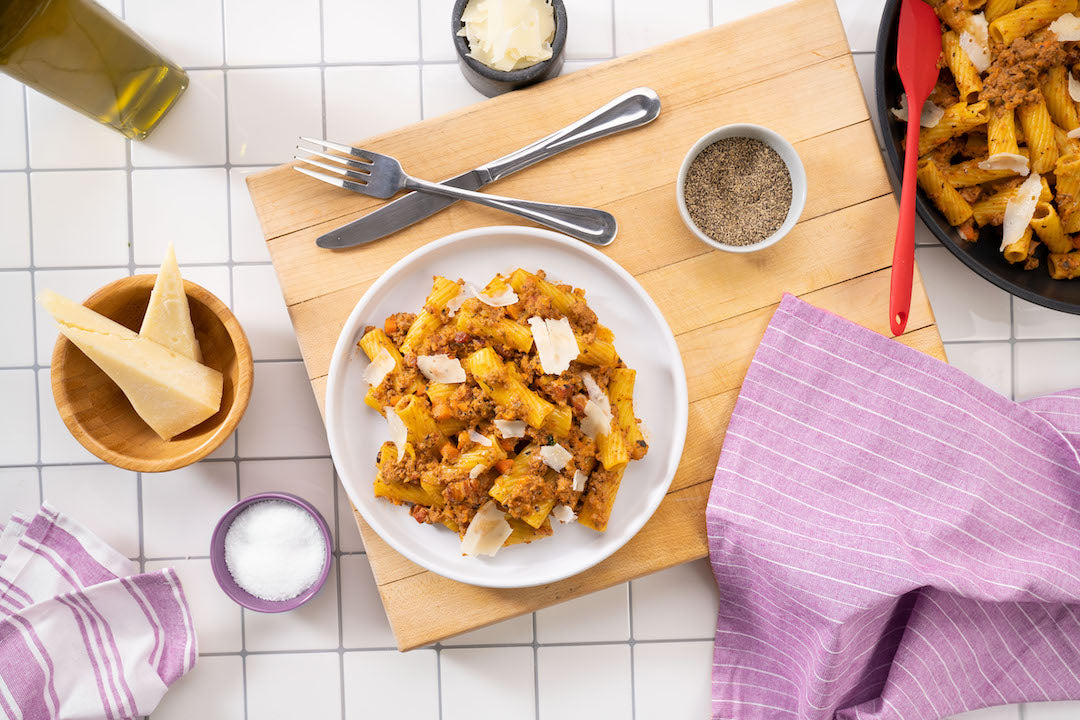Whether you’re cooking up a storm or relying on a meal kit to help bring the flavours to your romantic dinner, this wine pairing guide for beginners should help just about anyone feel more confident in marrying the flavours on your table!
Wine pairing is a complex and daunting process that involves many factors, including the flavours, textures, and acidity levels of both the wine and the food. Many leave finding the perfect pairing to the sommeliers, but that doesn’t mean you can’t test your taste buds and give it a try yourself! Everyone has to start somewhere, right? To begin, you’ll want to have a basic understanding of how one pairs wine with food, which helps build an appreciation for why certain combinations are frequently suggested.
What are the most common considerations when pairing wine to a delicious dish?
- Weight and texture: Wine should have similar weight and texture to your meal.
- Acidity: High-acidity wines pair well with rich dishes, and low-acidity wines pair well with light intensity dishes.
- Flavours: The wine should complement or contrast your dish in flavour.
- Tannins: Tannins pair well with proteins and fats, so rich dishes go well with wines high in tannins.
Weight and texture: Wine should have similar weight and texture to your meal.
One of the key principles of wine pairing is to match the weight and texture of the wine with that of the food. Ever compared how a really rich dish with strong flavours feels on the tongue against a bright dish with more subtle notes? For example, a creamy, rich stew in comparison to a flaky fish over salad.
Once you can recognize the weight of certain foods and flavours, you can start considering a wine pairing. A light-bodied white wine, such as a Riesling, would pair well with a light dish, like a fish or seafood, like our Pan Seared Tilapia. On the other hand, a full-bodied red wine, such as a Cabernet Sauvignon, would pair well with a heavier dish, like a steak, lamb, or Chef Romain Avril's Braised Beef Bourguignon.
Acidity: High-acidity wines pair well with rich dishes, and low-acidity wines pair well with light intensity dishes.
Another important factor in trying to pair wines is acidity. The acidity in wine helps to cut through the fat in food, so a dish with a lot of rich, creamy sauce would pair well with a wine that has high acidity. Opposites attract, as they say! For example, a Sauvignon Blanc, which has a higher acidity, would pair well with a heavier dish that has a creamy sauce such as our Grilled Chicken Pesto Penne.
Flavours: The wine should complement or contrast your dish in flavour.
Flavours also play a big role in wine pairing. The flavours in the wine should complement or contrast with the flavours in the food. Enjoying a dish with tomato-based sauce, like our Slow Braised Beef Bolognese? It would likely pair well with a Chianti, as the acidity in the wine complements the acidity in the tomatoes. Diving into a dish with spice? A dish like our Spicy Thai Panang Chicken Curry pairs well with a wine that has a little bit of sweetness, such as a Riesling, to help balance out the heat.
Tannins: Tannins pair well with proteins and fats, so rich dishes go well with wines high in tannins.
Lastly, you’ll want to familiarize yourself with tannins, a type of bitter and astringent chemical compound. It’s not nearly as scary as it sounds, as they allow for complexity in wine as well! The tannins in red wine can be great to pair with dishes that have strong umami flavours, as they help tame the umami notes, making the pairing more enjoyable and multidimensional. Struggling to identify umami as a flavour note? If you’re familiar with Chef Wallace Wong's Sweet Soy Braised Beef and Kabocha Squash, you may have an easier time identifying it as it’s a standout flavour in that dish!
It's worth noting that some wines can be versatile and can pair well with a variety of different dishes, while others may be more specific in their pairing. However, at the end of the day, it’s important to remember that the best wine pairing is often a matter of personal preference and taste.



